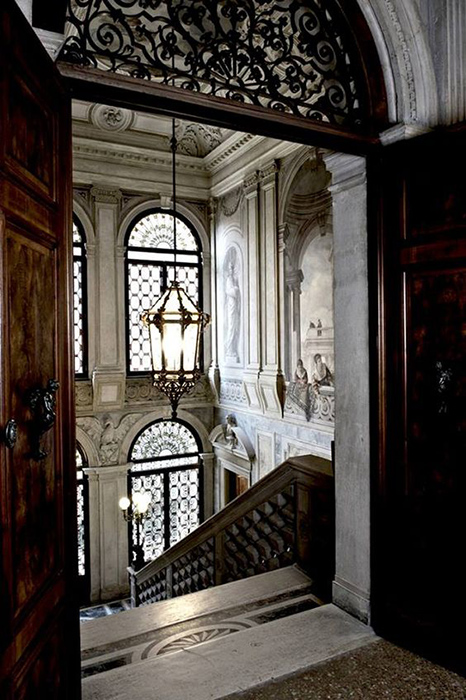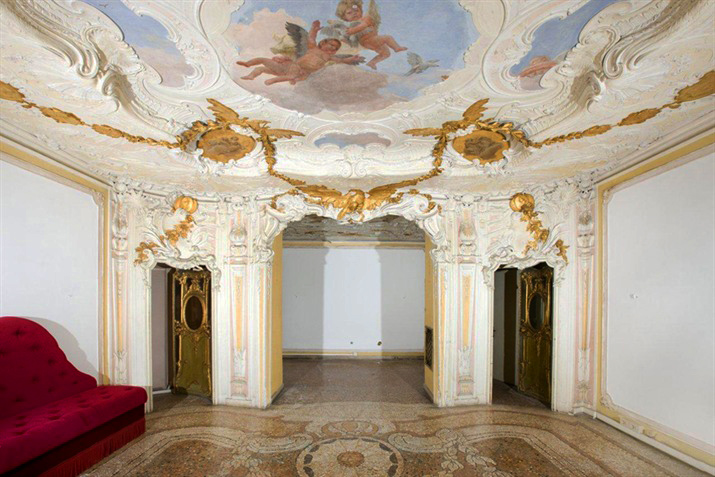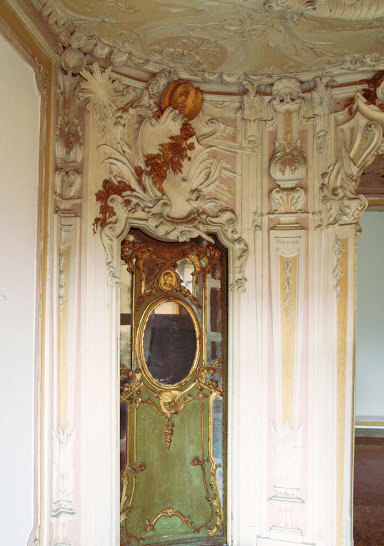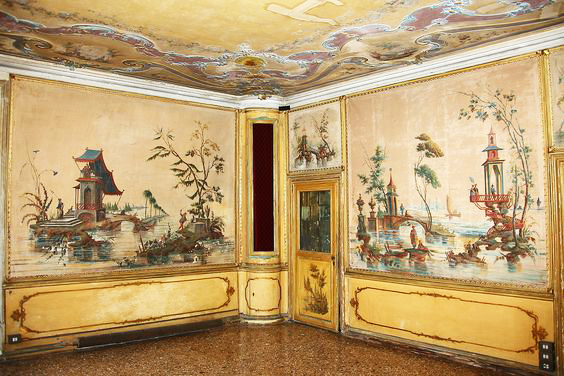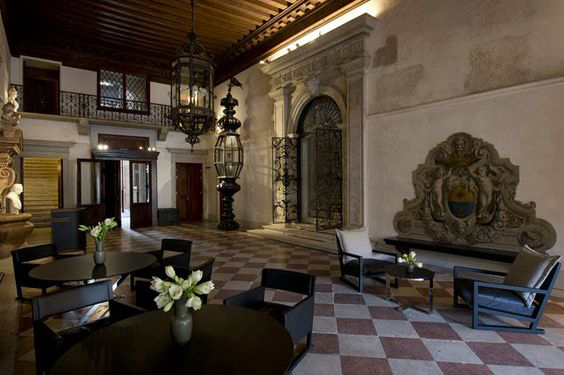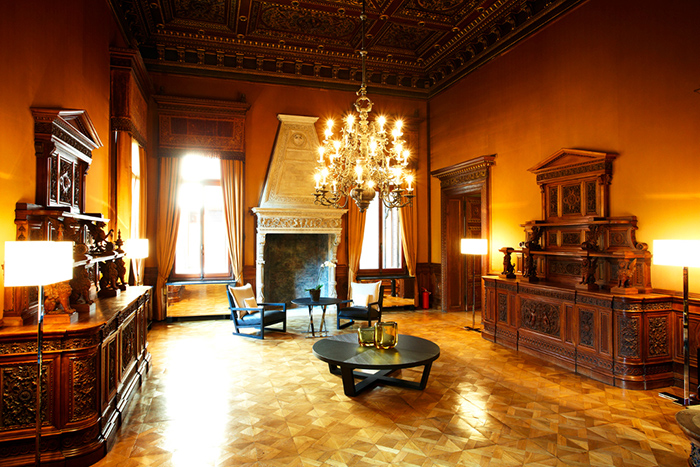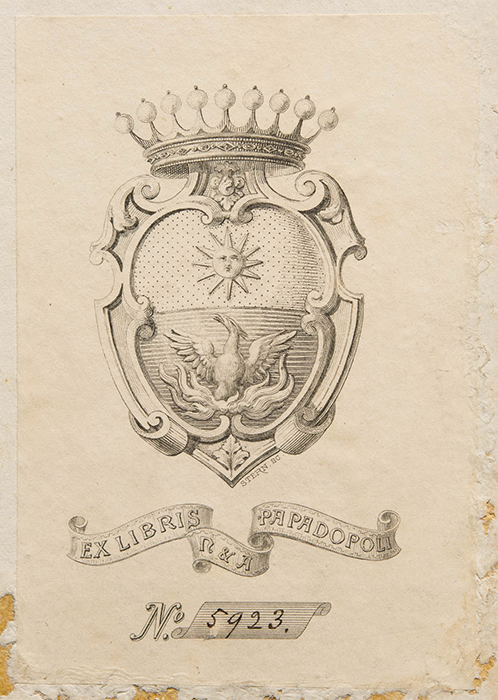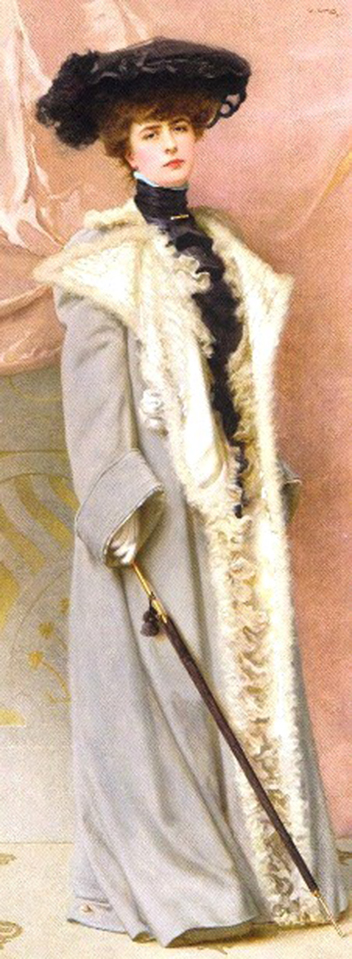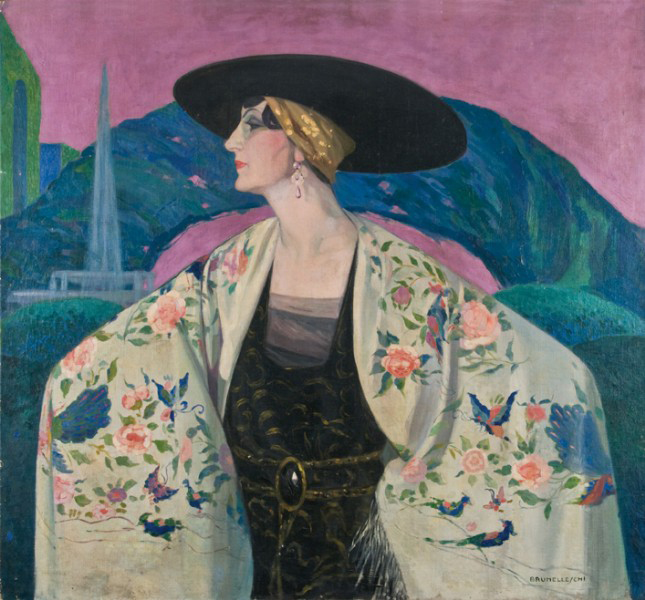The Palazzo Papadopoli
Download PDFThe Palazzo Papadopoli is a Venetian palace built by Giovanni Giacomo de’ Grigi (active from 1540 to 1575), around 1560. The façade overlooking the Grand Canal is decorated in the center with Palladian loggias resembling those of the architect Michele Sanmicheli (1484-1559), Mannerist architect of the Verona school. On the sides, simple windows with triangular pediments and curves are strongly influenced by the architecture of Andrea Palladio (1508-1580). Under the cornice appear small oval openings with frames characteristic of Jacopo Sansovino (1486-1570). The palace is surmounted by two obelisks, symbols of the Capitani da Mar. Rivaling the most prestigious buildings of the city, it is provided, just like the Ducal Palace, a Hall “of Four Doors” (Salone delle Quattro Porte).
This 16th century palace was built indeed for the family Coccina, from Bergamo. They had Veronese painting a huge and famous masterpiece for this palace, The Family Coccina Presented to The Virgin (1571).
After the disappearance of the last Coccina family member in 1748, the palace became Palazzo Tiepolo, when it was bought by the family of the great painter Giambattista Tiepolo. A painting on the ceiling of an alcove is attributed to him, and his son Giandomenico Tiepolo left there two scenes of 18th century Carnival of Venice, The Minuet and The Charlatan.
Subsequently, the palace passed from hand to hand before being purchased on January 25, 1864 by two brothers, Nicolo and Angelo-Papadopoli Aldobrandini. The Papadopoli, descents of a patrician family from Corfu, have a very good reputation. They inherited from their mother Maddalena the famous name of Aldobrandini, which notably was Pope Clement VIII’s family name. In addition to being landowners and industrialists, the Papadopoli brothers were committed to the city politics and acknowledged as patrons of the arts.
Hence, to revive its splendor, the palace was considerably enlarged and redecorated entirely from 1874-1875. This undertaking was led by the architect Girolamo Levi and by the decorator and antique dealer Moises Michelangelo Guggenheim . The first was in charge of the work of expansion and modernization of the palace, the second of interior decoration. Guggenheim created a journey through the ages inside the Palazzo Papadopoli, conceived to amaze the guests. Every room is decorated in a different style, recreating aristocratic atmospheres. One walks from the solemn grand staircase, evoking Quattrocento, to the Rococo exuberance in the “Stucco Room”; from the scholarly and opulent ambiance in the “Hall of Four Doors”, to the “Chinese Room”’s refined fantasies. The renovation was so important that a columnist wrote, in the "Gazzetta di Venezia": "The Palace Tiepolo of the sixteenth century gives birth to the Palace Papadopoli of the nineteenth century."
One of Nicolo’s twin daughters, Maddalena, married the Prince of Castelviscardo and Governor of Rome, Ludovico Spada-Veralli-Potenziani. The Palace was left by Nicolo Aldobrandini-Papadopoli to his other daughter Vera, wed to the Earl Giberto Arrivabene Valenti Gonzaga, and whose portrait was made by Umberto Brunelleschi.









